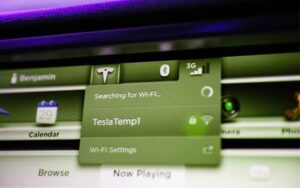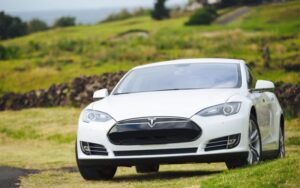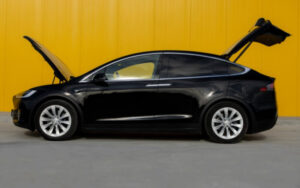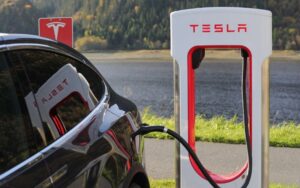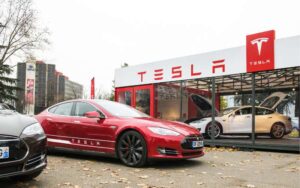Unveiling the Mystery of Tesla Battery Capacity!
Last updated on September 21st, 2023 at 09:35 am
Tesla’s reputation for battery quality is indeed top of the line, be it batteries for vehicles, homes, or small businesses. Tesla tries to meet the demands of its consumers at all costs.
However, in Tesla cars, Tesla does not rely on a particular battery for all car models. Rather, the various models of Tesla come with batteries of different types and capacities.
All Tesla Models use the nickel-cobalt-aluminum, nickel-magnesium-cobalt, lithium-iron-phosphate, or the new 4680 battery cells. The Tesla car models are Model S, Model 3, Model X, and Model Y, having battery capacities of 100 kWh, 75 and 82 kWh, 100 kWh, 75, and 81 kWh, respectively. The Tesla battery packs will undergo 12% degradation only after running 200,000 miles.
After being absorbed in this article, you should know the battery capacity of all Tesla Models and the highest one. You should also know the standard battery degradation rate of Tesla.
What Is the Tesla Battery Capacity for Each Model?
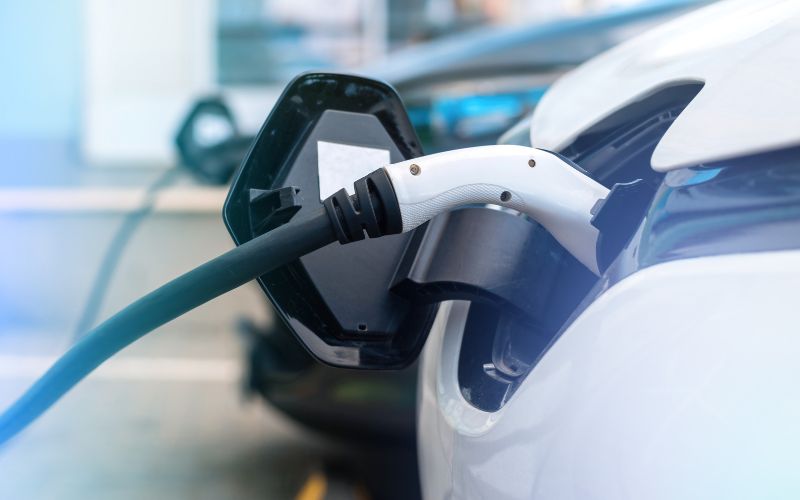
Each Model of Tesla comes with a unique design and a well-suited battery. The capacity of a Tesla battery is dependent on the properties of the battery itself.
Some models of Tesla come with Nickel-cobalt-aluminum (NCA), others the Lithium-iron-phosphate (LFP), and still, some carry the 4680 tablets battery pack.
However, the battery you will likely use suits your mobility (like how far and how often you drive). And believe me, nobody wants to spend on something they will not need.
While you may be after a battery capacity good enough to take you around the town or city, someone else might want one that can take him on trips.
Let us now address all the different Tesla car models and their battery capacities. Then, in the end, I am certain you will be able to find something that will suit you.
#1. Tesla Model S
The Tesla Model S battery pack contains 1865 battery cells that get their name from its dimensions of 18 mm diameter and 65 mm height.
The 1865 battery uses graphite/silicon as anode and nickel-cobalt-aluminum as the cathode. The charge carriers in this battery are the aqueous electrolyte and lithium ions.
Note, however, that the battery capacity in Model S has changed several times since its production from 60 to 100 kWh. The 60, 70, 75, 85, and 90 kWh are now out of production.
Among all the Model S batteries changed over the years, the 85 kWh had the heaviest components and weighed about 540 kg (1,200 lb).
The battery pack of 1865 batteries can carry up to 7,104 lithium-ion battery cells serially wired into 16 modules. You will find 74 cells forming six groups inside just one module.
#2. Tesla Model 3
Upon its debut in 2017, Tesla announced that the Model 3 has a 50 kWh battery capacity that will cover a range of 220 miles. While the 75 kWh battery option will be able to cover 310 miles.
Until May 2020, the Tesla Model 3 kept using the 75 kWh battery, but soon after May 2021, the Model 3 started using the 82 kWh.
The battery pack came with 2170 lithium-ion cells, also named after the cell dimensions of 21 mm diameter and 70 mm height.
There are four longitudinal modules, each carrying the groups inside of them all.
While the standard range can carry up to 2,976 cells, the long range can carry 4,416 cells weighing about 1,060 pounds.
#3. Tesla Model X
Model X has used lithium-ion battery packs of 60, 75, 90, and 100 kWh for years. Although, the 60, 75, and 90 are no longer in production (discontinued).
Model X’s most remarkable achievement is its ability to move from 0 to 60 mph within 2.6 seconds. And this battery is nickel-based, just like the Model S.
Therefore, it also uses the 1865 battery cells, which are slightly larger than the normal AA cells.
But this battery type is for Model S, X, and Roadster (original).
Model X’s all-wheel-drive system uses two motors, which is unusual for AWD systems that get their power from one source.
#4. Tesla Model Y
The battery capacity of the Tesla Model Y ranges from 75 kWh to around 81 kWh. And the battery capacity you will get will depend on the year and trim of the Model.
You will find the 81 kWh powertrain battery pack in the 2022 Model Y, While the 75 kWh battery pack is usually more associated with the 2023 Model Y.
With improvements in the battery pack and cell structure (4680 tablets battery), the 2022 Tesla Model Y has the most powerful high-voltage lithium-ion battery capacity of 81 kWh.
The 4680 battery cell of Model Y also gets its name from the structural dimension of the battery.
It is a tabless battery that is 46 mm in diameter and 80 mm in height.
Two hundred seventy-nine miles is the driving range that the Model Y’s rear-wheel-drive (RWD) base Model can go.
Whereas, by pairing it with the all-wheel-drive (AWD) drivetrain, there is an improvement in specs.
With an AWD drivetrain, the Model Y Long Range of 2022 and 2023 will give you a driving range of 330 miles. Meanwhile, the Model Y Performance will give a top speed of 155 mph.
The battery of Model Y has the protection of the Battery and Drive Unit Limited Warranty of Tesla.
Such protection covers Model Y’s Long Range and Performance for eight years (120,000 miles).
Below is a table showing the different Tesla car models with their capacity and the range of the cover.
| Tesla Models | Battery Capacity | Battery Type |
|---|---|---|
| Model S | 100 kWh | Nickel based |
| Model 3 | 75 & 82 kWh | LFP & NCA |
| Model X | 100 kWh | Nickel based |
| Model Y | 75 & 81 kWh | LFP |
Which Tesla Model Has the Highest Battery Capacity?
Judging from our table in the previous subheading above, it is only reasonable to conclude that the models with nickel-based battery types (Models S and X) have the highest battery capacity.
The high battery capacity of Model S is not limited to the arrangement of the battery pack, as said above. But another factor also boosts Model S’s battery capacity.
The Model S is not like the other electric vehicles. For instance, when you look at Model S, the entire floor space between the axle is occupied by the battery pack of Model S.
Such an arrangement gives the following advantages;
- It brings down the center of gravity height to 460 mm, boosts lateral acceleration to 0.9 g, and gives protection in the event of a rollover.
- Rotational inertial lowers and allows quick turning thanks to the battery’s bulk mass between the axles.
- The passenger area becomes stronger and safer also thanks to the battery’s cage.
Even though Models S and X have the same battery capacity, the Model X has the highest performance among all the Tesla car models.
For instance, the Model X performance can move from 0 to 60 mph in 2.6 seconds. It is also capable of covering ¼ mile within 11.4 seconds.
And let’s not also forget the two motors that the Model X all-wheel-drive (AWD) has and that you will not find in any other AWD.
What Is the Capacity of Tesla’s 4680 Battery Pack?
The Tesla 4680 battery pack has a total capacity of about 9,000 mAh, far higher than the 2170’s pack of 4,800 mAh and 1865’s 3,500 mAh.
Considering the Long Range Model Y battery pack, each cell contains about 98 Wh. About 828 cells have the 69×12 arrangement.
Therefore, by multiplying the 98 Wh by the 828 cells of the battery pack, you should get 81,144 Wh. Ultimately, this will give us the 81 kWh in the table above.
What Is the Capacity of Tesla’s 2170 Battery Pack?
The Tesla 2170 is larger than the 1865 battery cell, weighing about 68 grams.
A cell of 2170 batteries can charge as high as 4.2 volts, discharge as low as 2.5 volts, and store as much as 4,800 mAh.
What is the Mystique Surrounding Tesla Battery Capacity?
The mystique surrounding tesla’s new mystery battery unpacked is palpable. Enthusiasts eagerly await any news surrounding this revolutionary technology. With whispers of unparalleled range and efficiency, the curiosity grows. What secrets lie within this remarkable battery? Only time will reveal the true extent of Tesla’s innovation, leaving us captivated by the possibilities it holds.
What Is the Standard Tesla Battery Degradation Rate?
Tesla claims that with the efforts put into production and the data they have, the batteries of Tesla cars are to outlast the vehicle.
Furthermore, after 200,000 miles of Tesla’s battery, only 12% of it is expected to undergo degradation. And this shows the impressive durability that Tesla batteries carry.
Also, apart from the age and how long you have been using the battery, the degradation can sometimes be from the battery management system, especially when it comes to charging.

Hey, I’m Michael Davis, a 35-year-old with a degree and a love for cars and tech. Since I was a kid, cars have been my thing—so much that I even thought they ran on magic beans! Fast forward, and I’ve built Vehicle Army, your one-stop-shop for easy-to-understand car facts.


